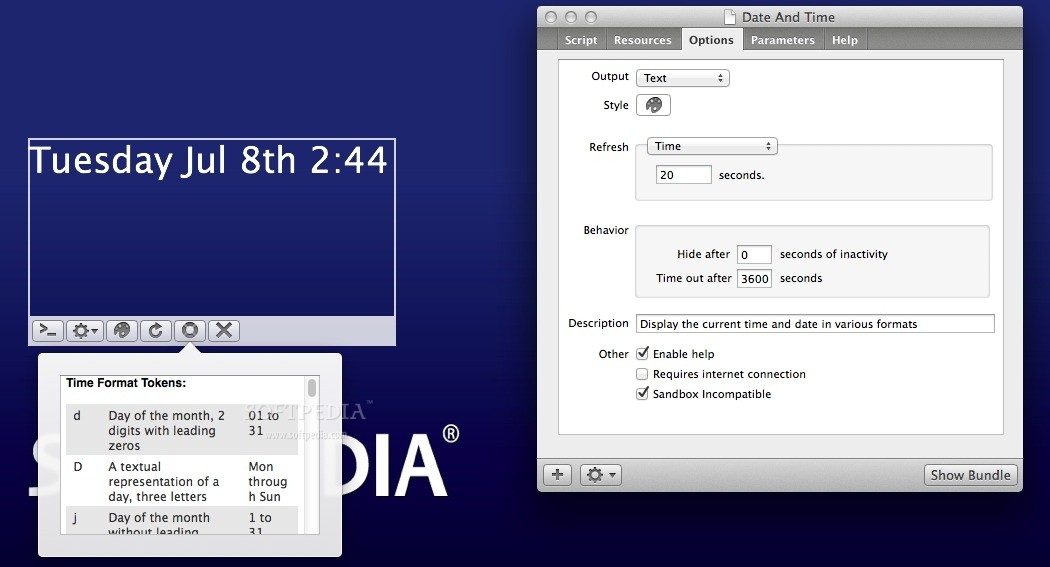

- #DESKLETS FOR UBUNTU 18.04 DEB FILE HOW TO#
- #DESKLETS FOR UBUNTU 18.04 DEB FILE INSTALL#
- #DESKLETS FOR UBUNTU 18.04 DEB FILE FULL#
- #DESKLETS FOR UBUNTU 18.04 DEB FILE SOFTWARE#
Install and Configure Filebeat 7 on Ubuntu 18.04/Debian 9.8 Add Elastic Stack 7 APT Repositoryįilebeat can installed using APT package manager by creating the Elastic Stack repos on the server you want to collect logs from.

In this guide, Filebeat is configured to forward event logs, SSH authentication events to Logstash. There are other types of Beats as described here. It can forward the logs it is collecting to either Elasticsearch or Logstash for indexing. It is installed as an agent on the servers you are collecting logs from. So what is Filebeat? Filebeat is a lightweight shipper for collecting, forwarding and centralizing event log data. Install and Configure Logstash 7 on Ubuntu 18/Debian 9.8 If you prefer to use a graphical interface, simply download the deb file and open it with a double click.Install Kibana 7 on Ubuntu 18.04/Debian 9.8 If you get any dependency errors when installing deb packages, you can use the following apt command to resolve and install all package dependencies: sudo apt install -f Installing deb Packages using GUI # Unlike apt and gdebi, dpkg doesn’t resolve dependencies. Use the -i (or -install) option to install deb packages with dpkg. Installing deb files with dpkg #ĭpkg is a low-level package manager for Debian-based systems. Type y when prompted and gdebi will resolve and install the deb package and all its dependencies for you.
#DESKLETS FOR UBUNTU 18.04 DEB FILE SOFTWARE#
ĭo you want to install the software package? : To install the deb package with gdebi type: sudo gdebi teamviewer_b. It is not installed by default in Ubuntu, but you can install it with the following command: sudo apt install gdebi Gdebi is a tool for installing local deb packages. The apt package manager will resolve and install all the package dependencies. Ġ upgraded, 84 newly installed, 0 to remove and 64 not upgraded.Īfter this operation, 66.3 MB of additional disk space will be used. You will be prompted to type Y to continue.

Otherwise, apt will try to retrieve and install the package from Ubuntu’s repositories. Instead of typing the absolute path, you can prepend. If the file is located in your current working directory
#DESKLETS FOR UBUNTU 18.04 DEB FILE FULL#
To install local deb packages with apt you need to provide the full path to the deb file. It was introduced in Ubuntu 14.04 and combines the most commonly used commands from apt-get and apt-cache. Is a command-line utility for installing, updating, removing, and otherwise managing deb packages on Ubuntu, Debian, and related Linux distributions.
#DESKLETS FOR UBUNTU 18.04 DEB FILE HOW TO#
In the following sections, we will show you how to use apt, gdebi, and dpkg utilities to install deb packages. When it comes to installing deb packages from the command line you have several tools at your disposal. : wget -no-check-certificate curl -k -O -L Installing deb Files from the Command Line # If you prefer the terminal, you can download the deb file with wget Download the deb package by clicking on the Ubuntu and Debian download link. TeamViewer is an all-in-one solution for remote support, desktop sharing, online meetings, and file transfer between computers.Īnd navigate to the TeamViewer for Linux download page Downloading deb Files #įor the purposes of demonstration, we will download and install the TeamViewer deb file The same instructions apply for Ubuntu 16.04 and any Debian based distribution, including Debian, Linux Mint and Elementary OS. In this tutorial, we will explain how to install deb files on Ubuntu 18.04. Be extra careful when installing deb packages from unofficial sources. Those applications have to be downloaded from the developer’s websites and installed manually. Many applications are not included in the Ubuntu or any 3rd party repositories. The Ubuntu repositories contain thousands of deb packages that can be installed either from the Ubuntu Software Center or from the command line using the apt and apt-get utilities.


 0 kommentar(er)
0 kommentar(er)
